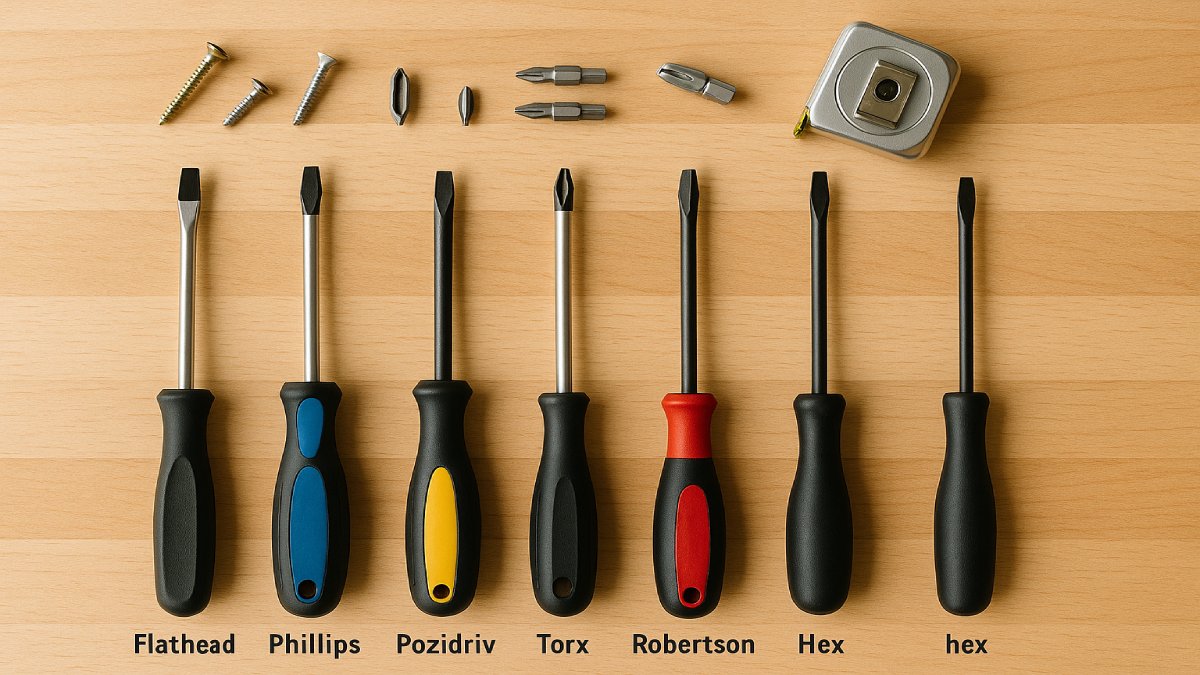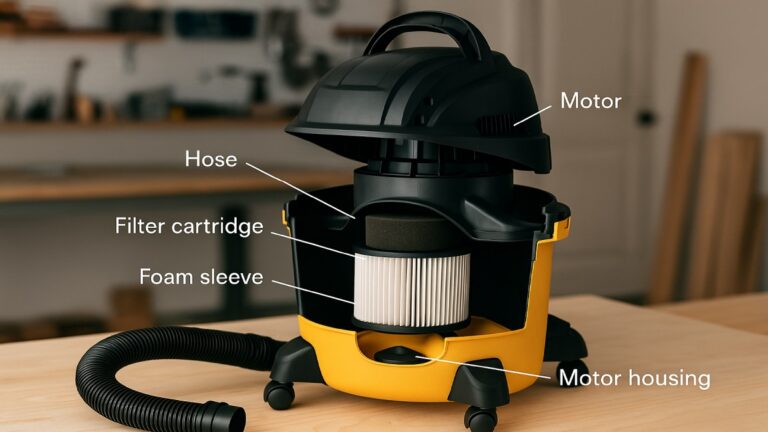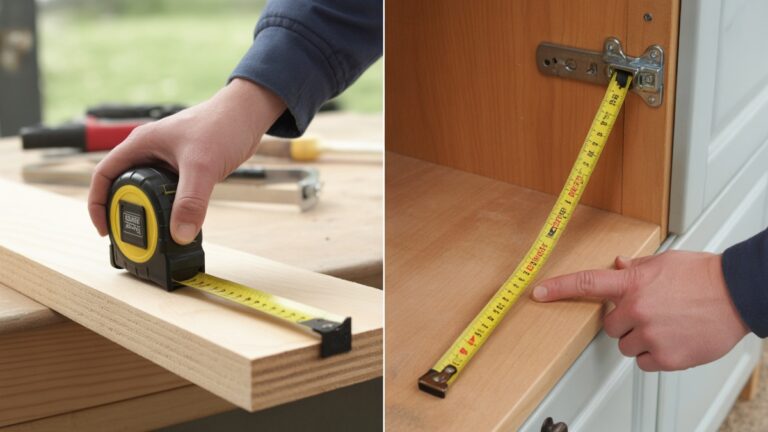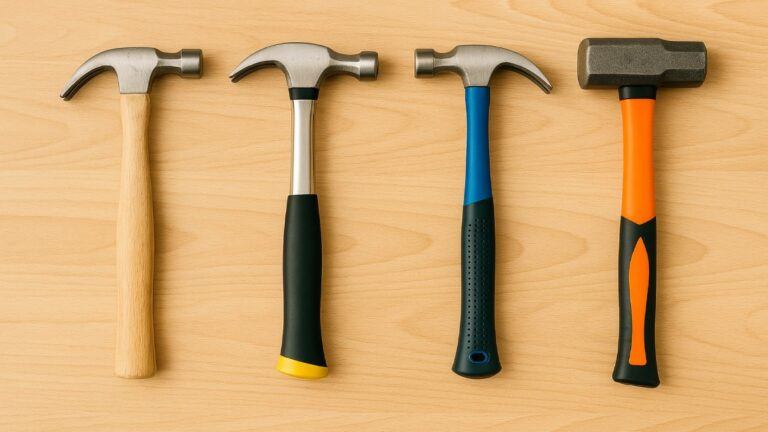Must-Have Screwdriver Types for Every DIY Project
A reliable screwdriver set is one of the first investments every DIY enthusiast should make. From tightening cabinet hinges to assembling furniture or repairing small appliances, the right screwdriver can save time and prevent frustration. This detailed guide walks you through every screwdriver type worth keeping in your toolkit and how each helps you work smarter, faster, and safer.

Why the Right Screwdriver Makes All the Difference
Every screw head is designed for a specific tool. Using the wrong screwdriver can strip screws, damage materials, and waste your effort. A proper driver offers grip, control, and torque—the three things you need for safe and efficient work. It’s not just about turning screws; it’s about precision and care. With the correct tip, every rotation counts, and every fix lasts longer.
- Efficiency: A well-fitted tip prevents slippage, helping you complete projects faster.
- Safety: Correct grip reduces strain and minimizes the risk of injury.
- Durability: Using the proper driver extends the life of both the tool and the screw head.
The Basic Parts of a Screwdriver
Understanding the parts helps you pick the right tool for every task. Most screwdrivers include four main sections:
- Handle: The grip area, usually made of rubber, plastic, or resin. Ergonomic handles reduce hand fatigue.
- Shaft: The metal section that connects handle to tip, commonly made from chrome vanadium or steel.
- Tip (Blade): The shaped end that fits into the screw head—available in countless sizes and designs.
- Optional Features: Some modern drivers include ratcheting systems or magnetic tips for convenience.
Pro tip: Magnetized tips can hold screws securely, making overhead work easier and safer.
The 10 Must-Have Screwdriver Types for Every DIY Toolkit
A balanced toolkit doesn’t require every size or shape available—but these ten screwdrivers cover nearly every project you’ll encounter at home.
1. Flathead (Slotted) Screwdriver
The most traditional type, featuring a single flat blade. It fits into a straight slot on the screw head. Flathead screwdrivers are common in electrical outlets, wall plates, and furniture hardware. Keep multiple widths handy because a mismatched blade can easily slip.
2. Phillips Screwdriver
The cross-shaped Phillips driver is a staple in most homes. Its self-centering tip provides excellent torque and control. You’ll find Phillips screws in door hinges, furniture, and appliances. Sizes range from PH0 for electronics to PH3 for heavy-duty tasks.
3. Pozidriv Screwdriver
Visually similar to Phillips, the Pozidriv has additional radial lines between the main cross slots, giving it more contact points. This design reduces cam-out and makes tightening smoother. Pozidriv screws are common in European and flat-pack furniture.
4. Torx (Star) Screwdriver
Shaped like a six-pointed star, the Torx driver is built for precision and strength. It prevents slipping, even under high torque. Torx screws appear in automotive work, bicycles, and electronics. Sizes are labeled T10, T15, T25, and so on.
5. Robertson (Square) Screwdriver
This square-tipped driver provides excellent grip and control, especially for woodworkers. Robertson screws hold firmly on the tip, letting you work one-handed. Common sizes include #1 for light fixtures and #2 for general carpentry.
6. Hex (Allen) Screwdriver
Featuring a six-sided tip, hex drivers are perfect for furniture, mechanical parts, and bicycles. They come in both metric and imperial sizes. Keep a small L-shaped Allen key set or a T-handle hex driver in your toolbox for assembly tasks.
7. Insulated Screwdrivers
Essential for anyone doing electrical repairs, insulated drivers are coated with non-conductive material to protect against electric shock. They’re rated up to 1,000 volts and marked with the IEC 60900 standard. Always inspect insulation before use.
8. Precision Screwdrivers
Small, detailed tools designed for electronics, watches, and eyeglasses. These tiny drivers usually have rotating caps that let you turn screws with your fingertips. A precision set includes sizes such as PH000, PH00, and SL1.5.
9. Ratcheting Screwdriver
A mechanical upgrade that speeds up work. Ratcheting drivers let you turn screws without resetting your wrist, perfect for assembling cabinets or working in tight spots. Many include reversible torque settings and bit storage inside the handle.
10. Multi-Bit Screwdriver
If you prefer minimalism, a multi-bit driver replaces an entire set. It includes interchangeable heads—Phillips, flat, Torx, and hex—stored inside the handle. Ideal for general maintenance and portable tool kits.

Specialty Screwdrivers Worth Owning
As you tackle advanced projects, a few specialty screwdrivers can make life easier. While not essential, they’re incredibly useful for specific repairs.
- Security Torx: Used in electronics or public fixtures with a pin in the center to prevent tampering.
- Tri-Wing: Found in gaming consoles and small gadgets.
- Torque Screwdrivers: Allow controlled force for delicate jobs like laptops or circuit boards.
- Stubby Drivers: Perfect for reaching screws in confined spaces where long shafts don’t fit.
How to Pick the Right Screwdriver for Any Job
Matching the screwdriver to the screw is the secret to a perfect fit. Always test how snugly the tip fits in the slot—there should be no wobble. The better the fit, the cleaner your work and the longer your screws last.
- Use Phillips or Pozidriv for furniture and general hardware.
- Choose Torx for cars, bikes, and high-torque machines.
- Pick Robertson or Hex for wood projects or metal assemblies.
- Always check your handle grip—rubberized handles prevent slipping when hands are sweaty.
Durable shafts made of hardened steel resist bending. Magnetized tips make the job even smoother. For all-around convenience, keep one manual and one ratcheting driver in your kit.
Building the Perfect Screwdriver Set
You don’t need dozens of tools—just a smart selection. Here’s a balanced combination that covers most household needs.
| Project Type | Screwdrivers Needed | Common Sizes | Best Style |
|---|---|---|---|
| Furniture Assembly | Phillips, Flathead, Hex | PH2, SL5, 4mm | Standard or Multi-bit |
| Electrical Work | Insulated Phillips/Flat | PH1, SL4 | VDE-certified |
| Automotive Repair | Torx, Robertson | T20–T30, #2 | Ratcheting |
| Electronics | Precision Phillips/Flat | PH00, SL1.5 | Mini precision set |
Simple Screwdriver Maintenance Tips
- Clean the tips after each use to prevent corrosion and buildup.
- Store screwdrivers in a dry, organized tray to keep them sharp and rust-free.
- Apply a drop of oil on ratcheting mechanisms every few months.
- Inspect insulated drivers regularly—replace any that show cracks or wear.
Proper care extends your screwdriver’s life and keeps every turn precise.
Manual vs Power Screwdrivers
Both manual and powered screwdrivers have their place. Manual drivers give you full control and tactile feedback, which helps when working with delicate materials. Power screwdrivers, on the other hand, save time during assembly-heavy tasks like decking or cabinetry.
- Manual: Best for precision and control. No batteries, no noise, perfect for detailed fixes.
- Powered: Ideal for repetitive work, large screws, or assembling furniture. Look for adjustable torque settings to avoid over-tightening.
A balanced toolkit includes both. For frequent use, cordless screwdrivers with lithium batteries are light and reliable.
Common Screwdriver Mistakes to Avoid
Even experienced DIYers can slip up. Here are the errors that ruin screws and tools most often:
- Using the wrong size tip—always match the driver to the screw head exactly.
- Applying too much force, which strips threads or cracks surfaces.
- Using worn-out bits—replace dull or bent tips promptly.
- Mixing up Phillips and Pozidriv, which causes cam-out damage.
- Working on live circuits without insulated tools.
Quick Safety Reminders
- Always turn off power before working near electrical sources.
- Keep a firm grip and wear safety glasses if working above shoulder height.
- Never use a screwdriver as a pry bar or chisel—it’s built for precision, not leverage.
Final Thoughts
From fixing a squeaky hinge to installing light fixtures, screwdrivers are the backbone of every DIY project. The key is quality and variety—owning the right mix ensures you’re prepared for anything. Start with the ten essential types, add a few specialty tools as you grow, and maintain them well. You’ll notice every project becomes smoother and far more enjoyable.
HomeFettle — Crafting Homes with Heart and Hands.





